ResQ’s Positive Impact Was 60× Bigger Than its Footprint in 2024
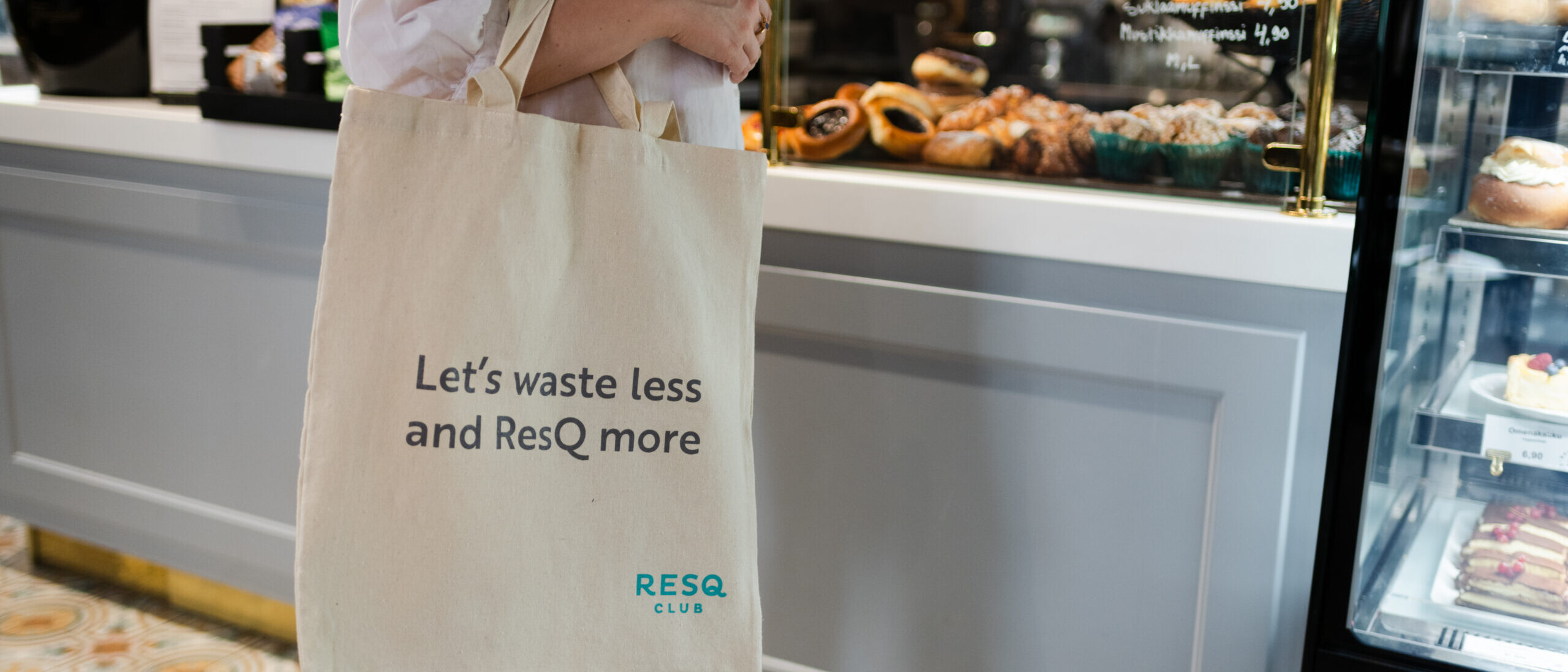
Article in short:
- First handprint assessment conducted: ResQ Club’s first carbon handprint assessment, conducted by NGS Finland, confirms a strong net-positive climate impact by enabling the rescue of surplus food and goods.
- 60x Climate Benefit: In 2024, ResQ’s total carbon handprint (emissions avoided) was 3 686,4 t CO₂e, nearly 60 times greater than its operational carbon footprint (61,7 t CO₂e).
- Net Positive Climate Impact: The resulting net positive climate impact was 3 624,6 t CO₂e, equivalent to avoiding the emissions from driving over 26 million km in a gasoline vehicle.
- Methodology: The positive impact was calculated using a Life Cycle Assessment (LCA), comparing a baseline scenario (item becomes waste) with the ResQ scenario (item is rescued and consumed).
- Future implications: The report underscores that the greatest climate lever for ResQ is scaling its service to enable more rescues, rather than marginal operational tweaks.
At ResQ Club, we’ve always known that rescuing surplus food matters. But now we finally have the numbers to prove just how much. Our first full carbon handprint assessment, conducted by independent consultancy NGS Finland, confirms that ResQ delivers a strong net-positive climate impact.
In our previous blog post, we unpacked our carbon footprint. This time, we’re diving into the carbon handprint to reveal the full extent of the climate benefits created through ResQ.
What Is a Carbon Handprint and Why Does It Matter?
You’ve probably heard of a carbon footprint: the emissions created by an activity or organization. A carbon handprint captures the opposite — the positive climate impact enabled by a product or service.
In ResQ’s case, it measures how much greenhouse gas emissions are avoided when surplus meals, groceries, flowers, or other goods are rescued instead of going to waste.
Food waste is a massive climate problem. Every discarded item carries all the emissions from farming, processing, transport, and preparation. When perfectly good products end up in the bin, all those emissions were for nothing. ResQ offers a solution to this problem by ensuring that high-quality products are enjoyed rather than wasted.
The results: A strong & positive net climate impact
In 2024, ResQ Club’s total carbon handprint was 3 686 t CO₂e, while our own operational footprint was just 62 t CO₂e. This means the climate benefits we enable are nearly 60 times larger than the emissions generated by running our service, resulting in a net positive climate impact of 3 625 t CO₂e.
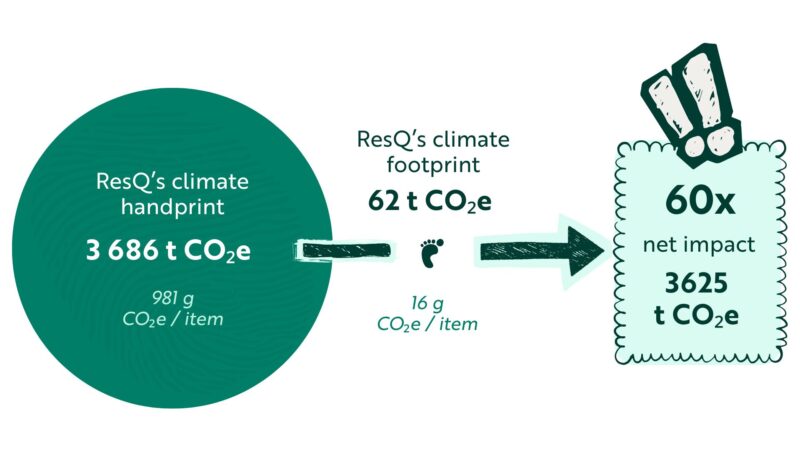
To put the net positive impact into perspective, that’s equivalent to avoiding the emissions from:

5 484 round-trip
flights from Helsinki to Munich
(Source: Atmosfair)

22 275 354 km
driven in an average gasoline car — equivalent to driving the Helsinki–Oulu route 36,697 times
(Source: DEFRA 2025)

65 903 new
iPhone 17 devices produced
(Source: Apple)
The difference between the two scales highlights that ResQ’s largest climate impact doesn’t come from optimizing our own operations (though we do that too)—it comes from enabling people to make better choices. The avoided emissions from rescued meals alone exceed our total operational footprint many times over.
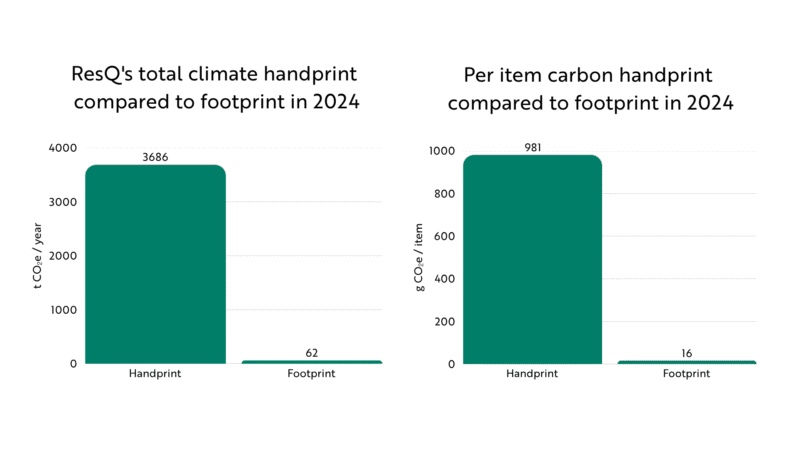
How the Assessment Was Done
We wanted this assessment to be rigorous, transparent, and scientifically sound. Here’s how NGS Finland approached it.
Life Cycle Assessment Scenarios
The handprint was calculated using life cycle assessment (LCA), a standardized method that compares alternative scenarios following VTT Carbon handprint guide V. 2.0 guidelines:
- Baseline scenario: The item goes unsold → becomes waste → no one gets to enjoy it. In some cases, new fresh food must be produced to replace what was wasted.
- ResQ scenario: The item is rescued through our platform → eaten rather than binned → fewer new items need to be produced. (Note: rescued items are sold in takeaway packaging, which is included in our calculations.)
The different scenario types considered are restaurant meals, cafe products, grocery bags, flowers, wholesale products and cosmetics. The assessment only includes what differs between these scenarios. For example, preparing the original meal happens in both cases, so it doesn’t affect the comparison.
System boundaries
The assessment covers all stages from raw material production through food service operations to the point of sale, including storage, manufacturing energy, and takeaway packaging.
Excluded are energy used by customers for storing or heating items, the waste management of the takeaway packaging, and other environmental impacts beyond greenhouse gas emissions. These boundaries ensure direct service impact assessment and scenario comparability.
Calculation methods
The calculations follow established LCA standards and emission calculation practices. Here’s what went into them:
- Waste amounts: Determined from actual item counts and weights
- Transport emissions: Calculated using industry-standard default distances
- Restaurant meal emissions: Based on fresh ingredient purchases, with specific emission factors for different protein categories. For two minor protein categories representing only 1.5% of total sales, we used simplified calculations due to limited data—a minor adjustment that doesn’t affect overall accuracy.
- Energy consumption: Calculated using national grid averages
- Packaging emissions: Based on average items per order and standard emission factors for different materials, including transport to points of sale
Assumptions
Because not every detail can be known, some assumptions were needed in the calculations, drawing on scientific databases, ResQ’s own data, and practical experience. Average item and packaging weights, how packaging is used across different scenarios, typical transport distances, and the need for refrigerated deliveries were all estimated using conservative values. In other words, we have intentionally avoided overstating ResQ’s positive climate impact.
Looking ahead
With this handprint calculation, we can now communicate our impact with greater transparency, confidence, and scientific credibility.
The report’s findings highlight something essential: scaling our service has a far greater climate impact than marginal operational tweaks.
While we remain committed to keeping our footprint low, the true climate lever lies in enabling more people, businesses, and communities to rescue more surplus goods. This is what climate positivity looks like in practice: a small operational footprint paired with a large, measurable benefit for society.
ResQ Club’s community, partners, and team are already part of the solution. This report gives us the data to prove it and the motivation to keep growing our impact.
“The report’s findings highlight something essential: scaling our service has a far greater climate impact than marginal operational tweaks.”
Hungry for more?
If you’d like to dive deeper, the full carbon handprint report is available upon request.
You can explore our carbon footprint assessment in the previous blog post »
And learn more about our collaboration on NGS Finland’s blog »
Contact:
Elsa Ahlfors
Marketing & Sustainability Manager
elsa@resq-club.com
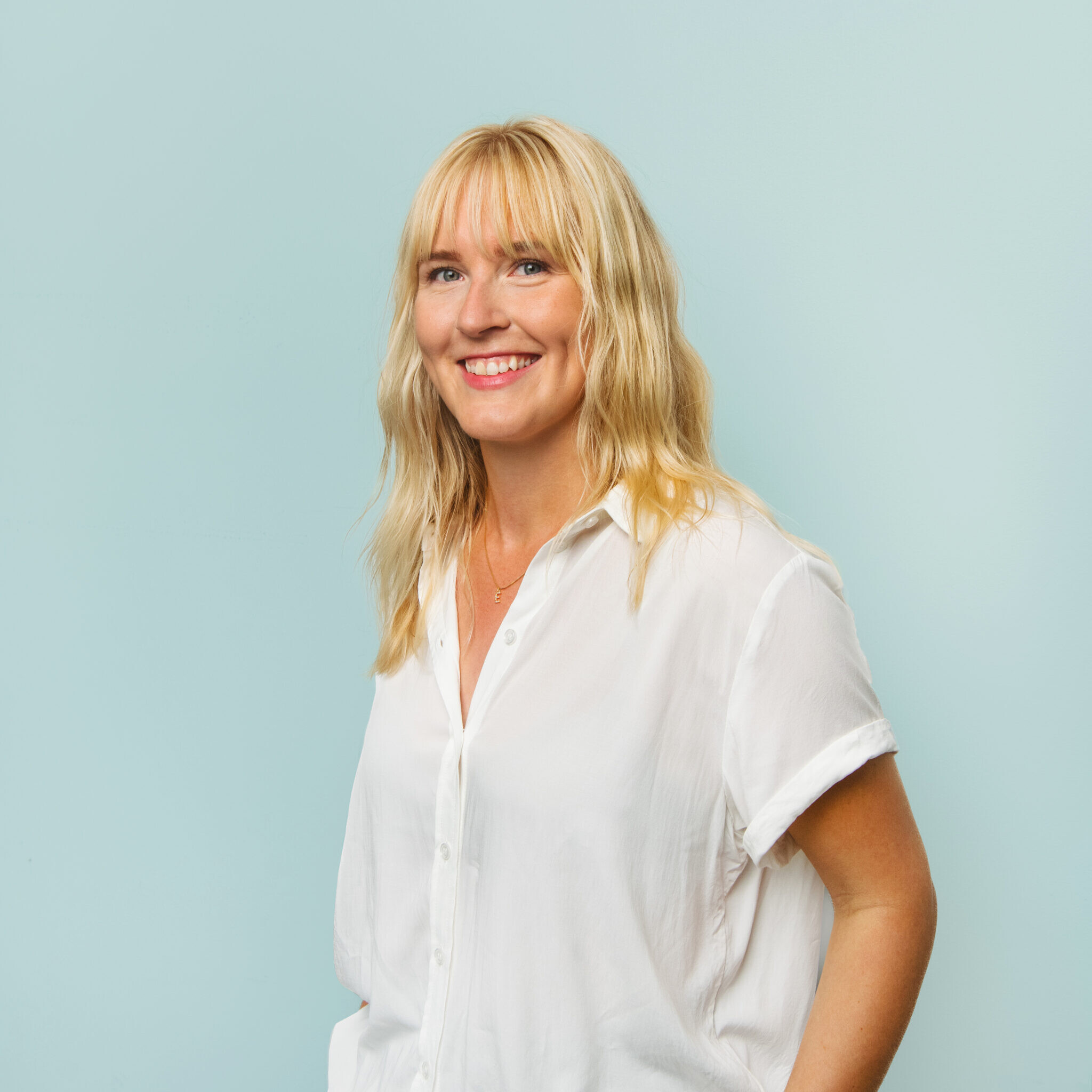
Elsa Ahlfors
Marketing & Sustainability Manager
Share this article
Lataa ResQ Club
-kumppanisovellus
Skannaa QR-koodi ladataksesi sovelluksen
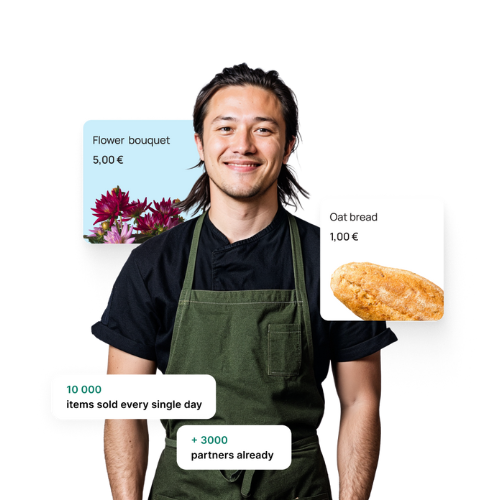
Kasvata myyntiä vähentämällä hävikkiä. Miksi heittää hyviä tuotteita pois? Muuta myymättömät tuotteet
tuloiksi ja houkuttele samalla uusia asiakkaita.
Get the ResQ Club partner app
Scan the QR code to get the app

Unlock New Revenue from Unsold Goods. Why waste quality goods? Turn surplus into profit and attract new customers.
Get the ResQ Club App
Scan the QR code to get the app

Save money and help reduce waste with ResQ Club. Find delicious food and more in our app.